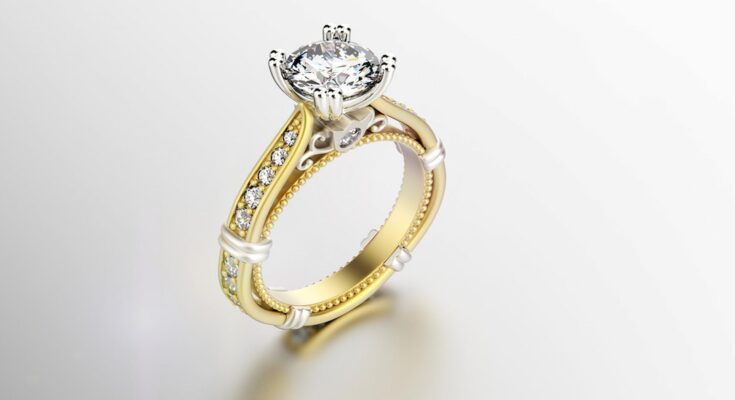During the 1700s, the tradition of giving engagement rings in the UK began to take root, laying the groundwork for a custom that would evolve over centuries. As engagement rings UK gained popularity, the choice of precious stones became an integral part of these symbols of love and commitment. Each stone was not just a beautiful adornment but also carried significant meanings, reflecting the sentiments and beliefs of the era.
The late 17th and early 18th centuries saw a flourish in the use of various gemstones, each selected for its aesthetic appeal as well as its perceived powers. Diamonds, although rare and expensive, began to make their mark as a symbol of eternal love. This period heralded the belief that diamonds possessed divine properties, representing strength and invincibility. It was common for people to believe that wearing a diamond would bring good fortune to the wearer, particularly in matters of love.
However, diamonds were not the only stones favored in engagement rings. The popularity of colored gemstones was also on the rise, with many opting for stones like sapphires, emeralds, and rubies. Sapphires, often associated with nobility, were believed to protect against envy and harm, making them a popular choice for engagement rings. Their deep blue hue symbolized loyalty and trust, values that were highly regarded in romantic partnerships of the time.
Emeralds, with their lush green color, were another popular choice. They symbolized rebirth and love, reflecting the idea that love could flourish anew with each passing season. Furthermore, emeralds were thought to grant wisdom and prosperity, qualities that many hoped to cultivate in their marital lives. This connection to nature and renewal made emeralds particularly appealing, embodying the hope for a prosperous future together.
Rubies, on the other hand, carried a reputation for passion and desire. Their vibrant red color was associated with fiery emotions, making them an ideal representation of romantic love. The belief that rubies could protect the wearer from harm further cemented their place in engagement rings during this period. Couples often chose rubies not only for their beauty but also for the fervent love they symbolized, imbuing their unions with a sense of intensity and passion.
In addition to these popular choices, semi-precious stones were also utilized in engagement rings. Amethyst, for example, was revered for its calming properties and was believed to promote tranquility and balance in relationships. This made it a suitable option for couples wishing to create a harmonious and loving environment. Other stones, like garnet and topaz, were chosen for their unique colors and meanings, adding personal significance to each ring.
The setting of these precious stones was equally important. Simple gold bands were common, but more elaborate settings with intricate designs became fashionable. This allowed for a more personalized touch, as couples could choose settings that reflected their individual tastes and the unique qualities of the stones themselves.
As the 1700s progressed, the meaning and significance of precious stones in engagement rings continued to evolve. Each gem was carefully chosen not just for its beauty, but for the values and emotions it represented. The rich symbolism associated with these stones added a layer of depth to the act of giving an engagement ring, transforming it into a meaningful token of love and commitment. Today, as engagement rings UK remain a cherished tradition, the historical significance of these precious stones still resonates, reminding us of the timeless values of love, loyalty, and passion.
